Every year, attention paid to diversity, equity, and inclusion is growing, and this approach is already a must-have for communication within companies and brand communication with consumers. We at Stripo always consider this when creating ready-made email templates and individual modules so our users can immediately prepare their campaigns with these requirements in mind.
In this article, we’ve put together tips, insights, and examples to help you make your emails inclusive for people from different generations and with different gender identities and expressions, sexual orientations, races, ethnicities, and disabilities.
What are diversity, equity, and inclusion?
First, let’s understand the phenomena of diversity, inclusion, and equity and what connects them.
Diversity is the recognition that within any group, persons have individual differences, such as age, religion, sexual orientation, gender identity, ethnic or national origin, and race. Each person is unique, and it is crucial to understand these features.
Inclusion refers to the steps organizations take to welcome and empower people with different backgrounds, identities, and disabilities. Regardless of their characteristics, each person should feel valued, and the workplace should feel comfortable and safe. This approach can apply both to creating an inclusive working environment in companies and to communicating with users and email subscribers.
Equity assumes that all people have equal access to everything, regardless of their identity. At the same time, equity recognizes that everyone starts from different starting positions, leading to a desire to correct the imbalance. Inclusion provides this access based on the principles of equity.
Therefore, in today's society, diversity and inclusion are critical values that companies and brands must remember in their communications.
Why are diversity and inclusivity essential for emails?
One of the tasks that email marketers set themselves is to create engaging emails. For this, it is important to show the audience that you recognize that your subscribers include people with different experiences, ages, genders, and disabilities. In addition, you need to do your best to create an inclusive space where their differences are acknowledged, accepted, and presented.
Diversity and inclusion will influence the content and tone of voice of your emails and allow you to create personalized emails for diverse groups. Diversity and inclusion in emails will be the hallmark of your brand.
What prevents you from creating inclusive emails?
Here are some reasons why companies are unable to create inclusive email marketing and diversity initiatives:
- they do not realize that non-inclusiveness is a problem;
- they do not want to change their communications, as this will create additional work;
- the company representatives or marketers may have personal unconscious biases that influence, for example, which images are chosen for emails;
- technical difficulties may be associated with segmentation of the audience according to certain characteristics and personalization;
- the large time investment required to study the audience.
Which types of emails are the most critical for diversity and inclusion?
As we wrote above, monitoring diversity and inclusion in all emails a brand sends is crucial. After all, your tone of voice, principal position, and mission statement should be constant in all communication channels.
Separately, we would like to emphasize groups of emails such as job descriptions, emails companies send to job seekers, and emails to employees. It is important for your current and future employees to understand that they work or will work for an organization where the principles of diversity and inclusion are not an empty phrase but a core value.
Another large group is advertising messages, where companies focus on diversity and inclusion in their promotions, creating unique advertising campaigns or emphasizing this with their positioning. For example, Dove, a Unilever brand, created campaigns that targeted — people of color, the LGBT community, and people of diverse ages and body types. Then, this became a trend that many companies followed.
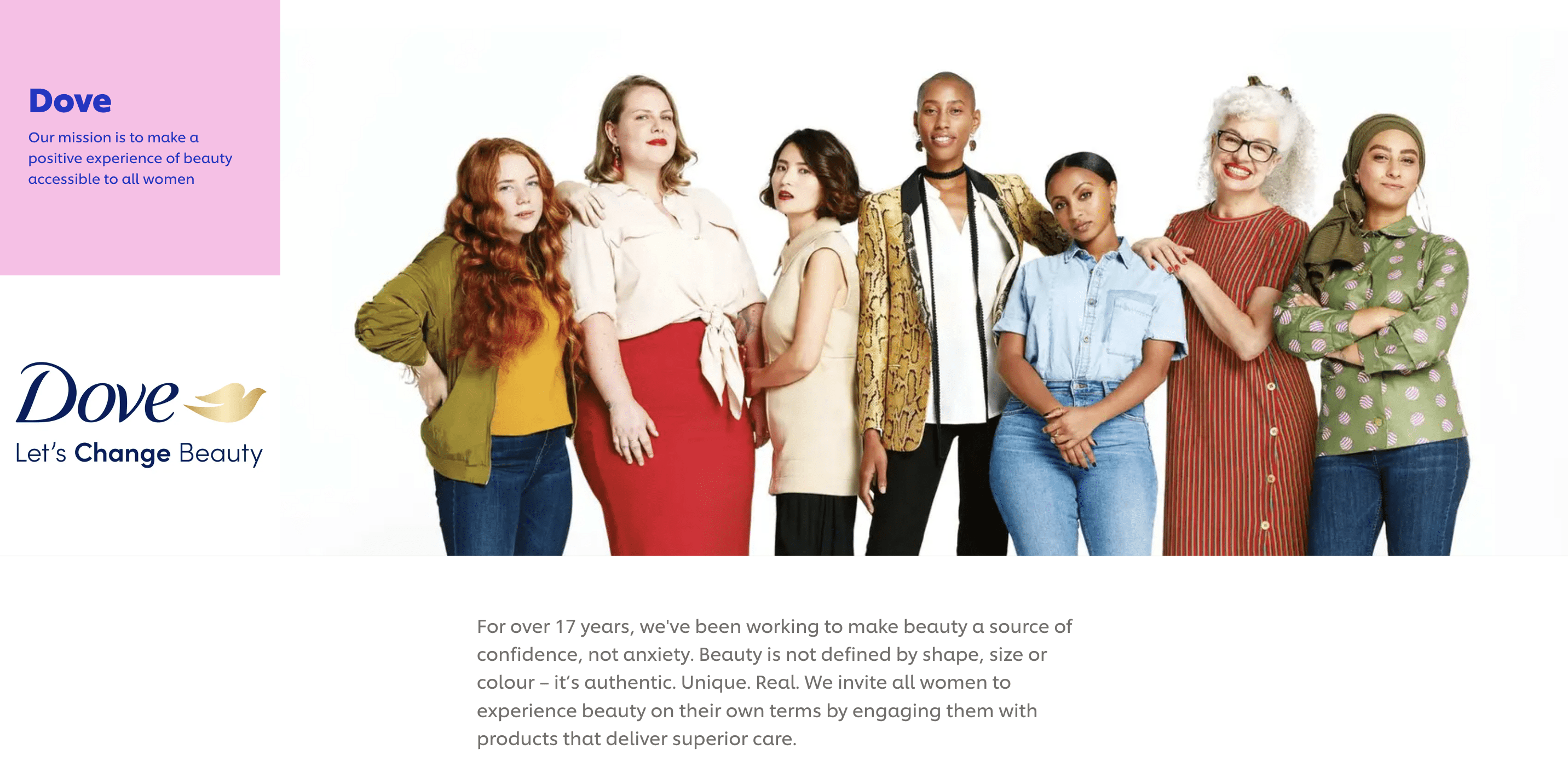
(Source: Unilever)
The Nike brand launched a separate advertising campaign, “Until we all win,” which promotes sports from various diverse groups.
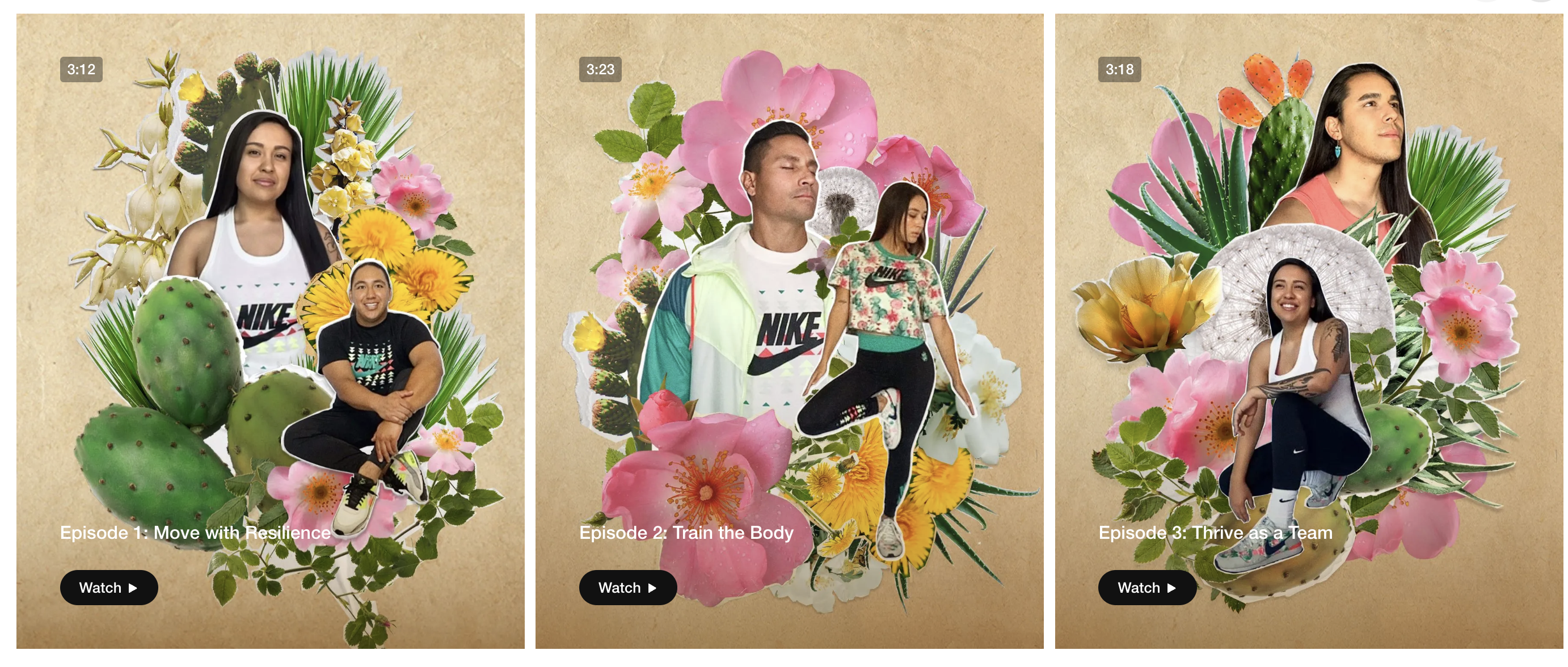
(Source: Nike)
Tips for better diversity and inclusion in emails
We’ve put together some practical tips to ensure that your emails are diverse and inclusive. Start with the basic steps, then add this approach to all your communications with customers and employees.
Understand and respect your subscribers
Collect information about your subscribers with surveys and registration forms. You can ask them about their identity, family status, or veteran status, and additional questions about their preferences, special holidays, clothes, travel, and socioeconomic status. Find out what language they would like to read your emails in, and add that language to increase your reach.
You can create built-in questionnaires for your research in the Stripo editor. Below is an example of an email template with a survey invitation.
Diversity and inclusion email template
Subject line: Please participate in our diversity and inclusion survey
Hello [Name]!
We’re asking you to participate in our first diversity and inclusion survey. We created this survey to explore our readers’ views on inclusion, equity, belonging, and voting rights.
We’ll also ask you for important, albeit sensitive, demographics, such as gender identity, race/ethnicity, sexual orientation, physical ability, veteran status, and socioeconomic status. It will only take about 5 minutes.
Please answer the questions in the form in this email or at the link below.
We’ll be grateful for your participation, as you’ll help us gather opinions about working at [company name] / about the comfort of communication with [company name]. This survey is anonymous, and it’s not possible to identify specific individual responses — they’re only presented in aggregate.
Thank you for your participation!
[Name]
Follow accessibility guidelines
Accessibility in emails is one way to make your emails inclusive for your subscribers who may have difficulty reading them due to some physical condition or disability.
The most frequent accessibility recommendations include using specific fonts and font sizes, contrasting colors, adding alt text to images, left-aligning text, and more. We have prepared a detailed accessibility guide to help you consider all the necessary points in your emails.
This step may change your email templates, brand guides, and design systems, but it’s essential.
Use inclusive language and gender-neutral terms
When preparing email texts, it is significant to remember that CRM or ESP settings can separate the entire audience into male and female and not include other gender identities, such as non-binary and genderqueer. This means it is better to use gender-neutral terms when referring to all readers to avoid offending any of them.
This is how the new etiquette of email newsletters appears — inclusive language. Here are its main features:
- don’t use greetings like “guys,” “ladies,” or “madam” — it’s better to replace these with the words like “folks” or “friends”;
- do replace the pronouns “she” or “he” with “they/them”;
- don’t use adjectives that previously discriminated against diverse groups, such as “crazy” and “insane.“ It’s better to replace them with the synonyms “outrageous“ or “bizarre”;
- when naming positions, do choose neutral words — “chairperson” and “spokesperson” are better than “chairman”;
- do use words like “significant other” or “partner” rather than “wife” and “husband”.
Take special care to ensure that your emails don’t imply that people are simply not trying hard enough if they don't get the desired results. Typically, such advertising messages use the tactics of “pressing the pain” and do not consider obstacles such as racism, sexism, homophobia, or health problems.
Use a friendly and sincere tone
Too serious and formal emails have not been popular for a long time. When brands think through their tone of voice, they try to be friendly and sincere. Companies often use humor to do this.
However, we want to warn you: check your jokes, memes, or funny stories to see if they might offend some subscribers. If you feel that such a joke could be potentially offensive to someone, it’s the best to leave it out. Such mistakes damage the reputation of the brand and affect sales. The most unfortunate jokes have sometimes cost companies a public boycott.
This example shows how the brand provided a sincere tone and used body-positive images (it’s our next point).

(Source: Email from Girlfriend Collective)
Show diversity through color-inclusive and body-positive images
Photos and illustrations are important to help your audience see themselves in your brand. So, try to choose images for your emails that include people of all skin colors, body shapes, and sizes across the LGBTQ+ gender spectrum, including transgender, non-binary, and gender non-conforming people.

(Source: Email from Victoria's Secret)
Even if your brand does not sell products that can be shown in use by different groups of people, you can include such images in your campaigns, for example, when you write about your principles of difference and inclusion and participate in LGBT movements and movements for social justice, such as Black Lives Matter.
Here are some examples of such email marketing campaigns.
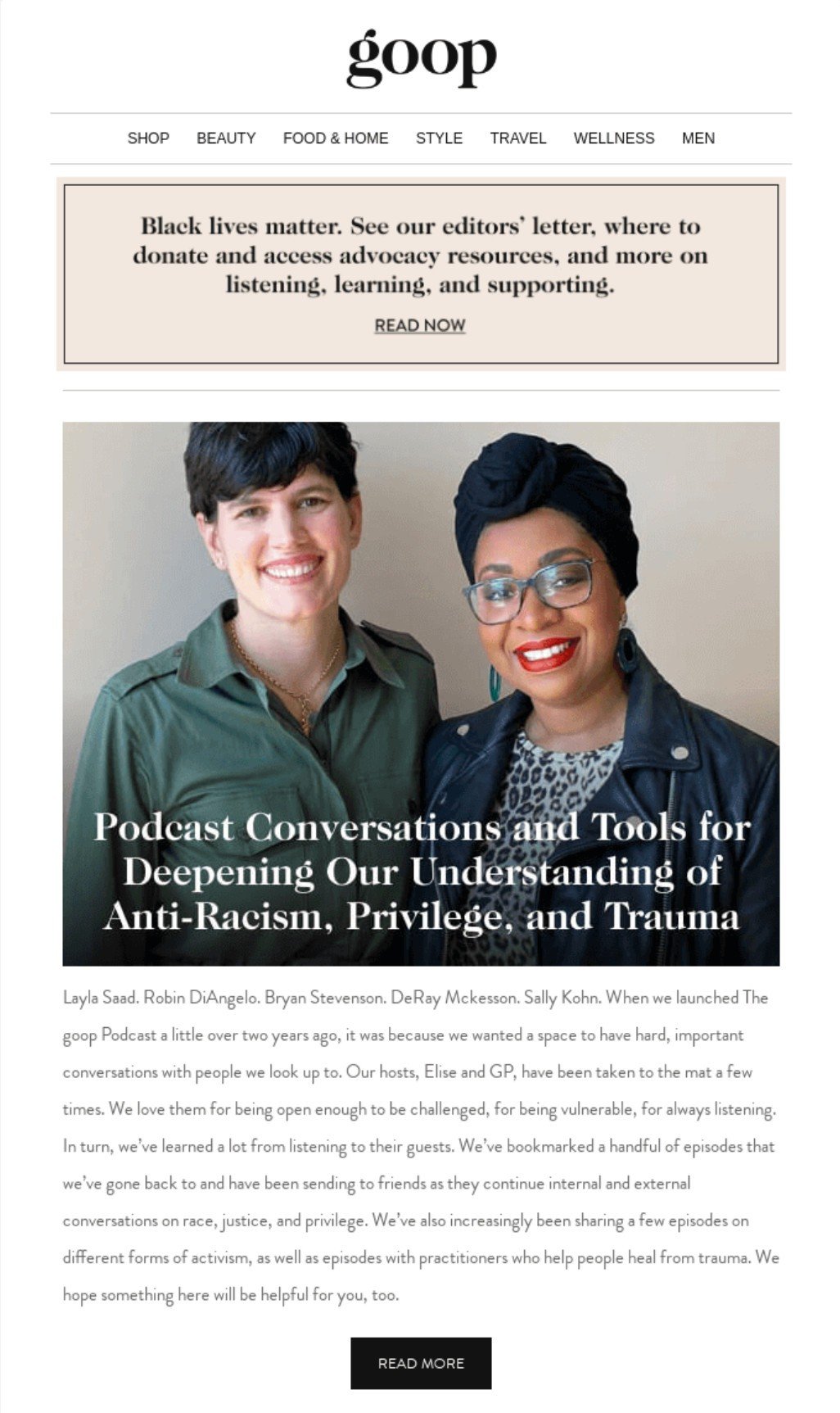
(Source: ReallyGoodEmails)
Here’s another example in which the brand The Gist shows how they protect trans athletes.
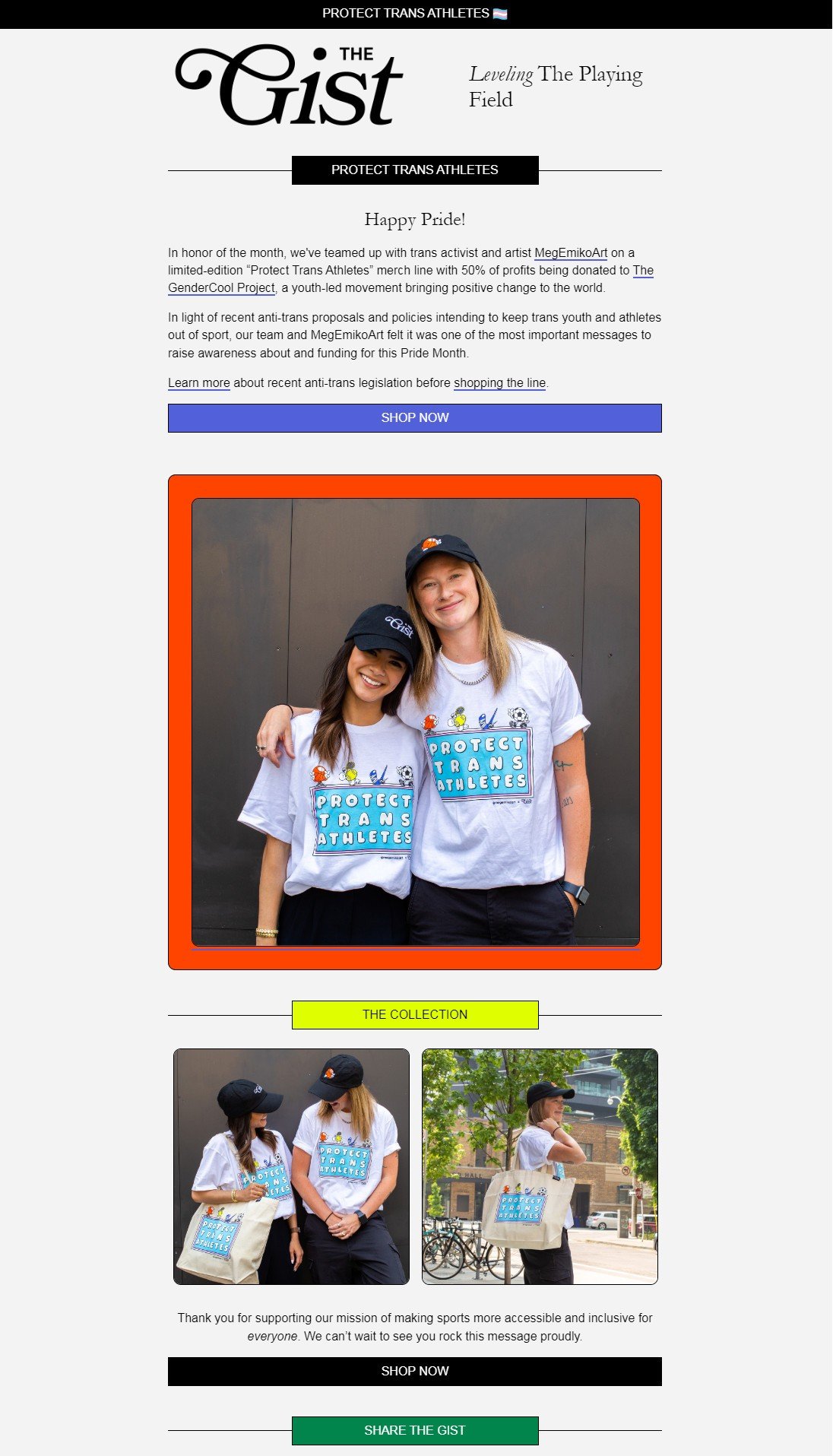
(Source: Email from Gist)
Make your email signature inclusive
An inclusive email signature can also help you appear more open in emails. So, add some little touches to help personalize your email threads:
- Include preferred gender pronouns (he/him, she/her, they/them) to let non-binary persons feel safe in conversation.
- Turn on the pride flag 🏳️🌈 if you are a member of the LGBT community or want to show that you support it.
- Include a symbol that recognizes gender equality ♀️ or a caption that says “We are proud to support gender equality”.
- Show that you’re part of an inclusive international team by including the flag or flags of the country you come from or work in. Add more than one if you have dual citizenship.
- Include a call to action (CTA) for company awards (for diversity or inclusion) 🏆.

(Source: Email from Litmus)
By the way, you can use our email signature generator to grab subscribers’ attention.
Wrapping up
Respecting people’s differences is an approach that requires systemic change. But using diverse and inclusive emails in your conversations with your audience will open up unique perspectives for your company. This experience comes with practice, and with each new email you create for your subscribers, their brand loyalty will only increase.
Use our advice as your guide, be inspired by brand examples, and take these first steps in the right direction.
How important do you think it is to consider diversity and inclusion when preparing emails? Let us know in comments.





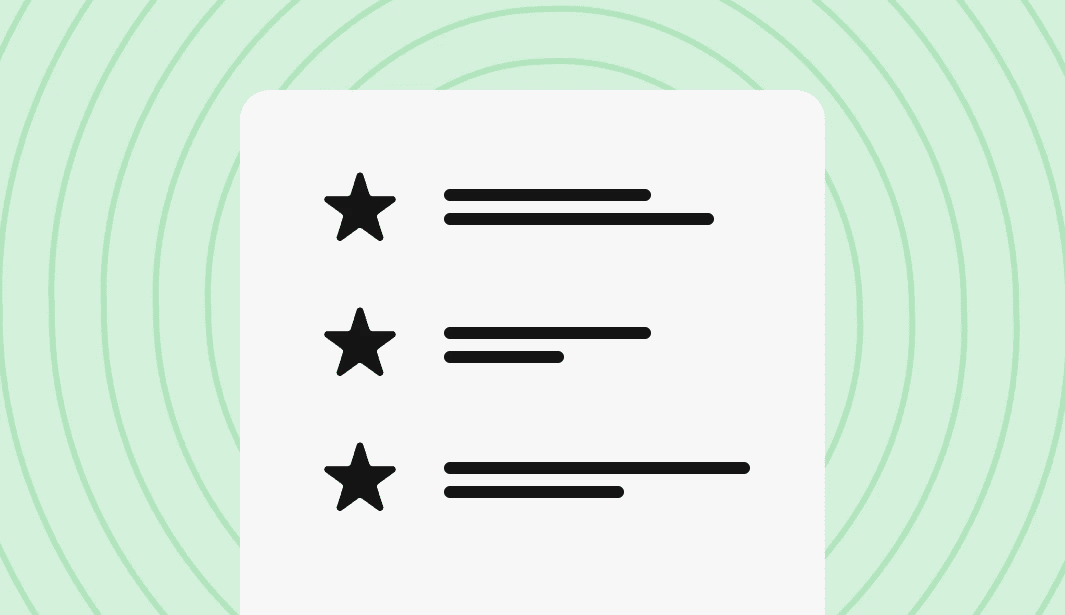

0 comments